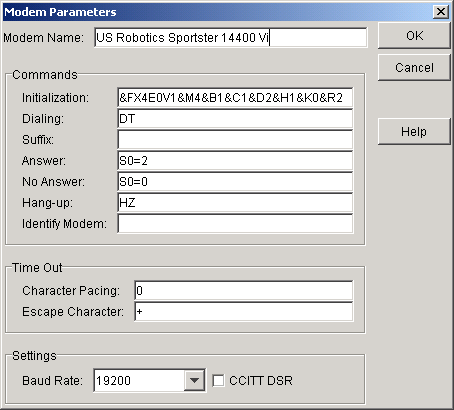Creating a Modem Initialization String
If your modem definition does not work properly, and if troubleshooting efforts are unsuccessful, it is possible that the modem initialization string you have used from the modem database might not be working. It might be necessary for you to create a new modem initialization string to check this possibility.
You need to know what to include in a new initialization string. See the manufacturer's modem operation manual under index entries such as "initialization string," "init string," or "AT string," or contact the modem manufacturer for more information about the initialization string.
The modem command initialization string can contain up to 25 command characters that execute the following modem functions:
- Enable verbal result codes
- Turn command echo off
- Track data carrier
- Return CONNECT messages
- Drop carrier and reset modem when DTR (Data Terminal Ready) drops
- Enable error correction
- Enable flow control and make sure port is enabled
- Enable fixed DTE (Data Terminating Equipment) speed
If you need multiple lines in the command string, use the grave accent (') to embed control characters, such as a carriage return. The grave accent is below the tilde (~) on your keyboard.
After you check the modem documentation for the correct characters to include in the string, you can define the initialization string for the Async Gateway.
To create the initialization string:
-
In ConsoleOne, browse to and select the Domain object where you created the gateway.
-
Right-click the Async Gateway object, click Properties, then click Ports.
-
Select the port you want to edit, then click Edit.
or
If you are creating a new port definition, click Create.
-
In the Port Information dialog box, click Choose Modem.
-
Select your modem from the Modems list, then click Edit.
or
If you are defining a modem not listed, click Create.

-
In the Initialization field, edit the existing modem initialization string.
or
If you are creating a new modem definition, specify the modem initialization string for the modem.
-
Complete the other fields in the Modem Parameter dialog box, as described in Creating a Modem Definition, then click OK to save the information.